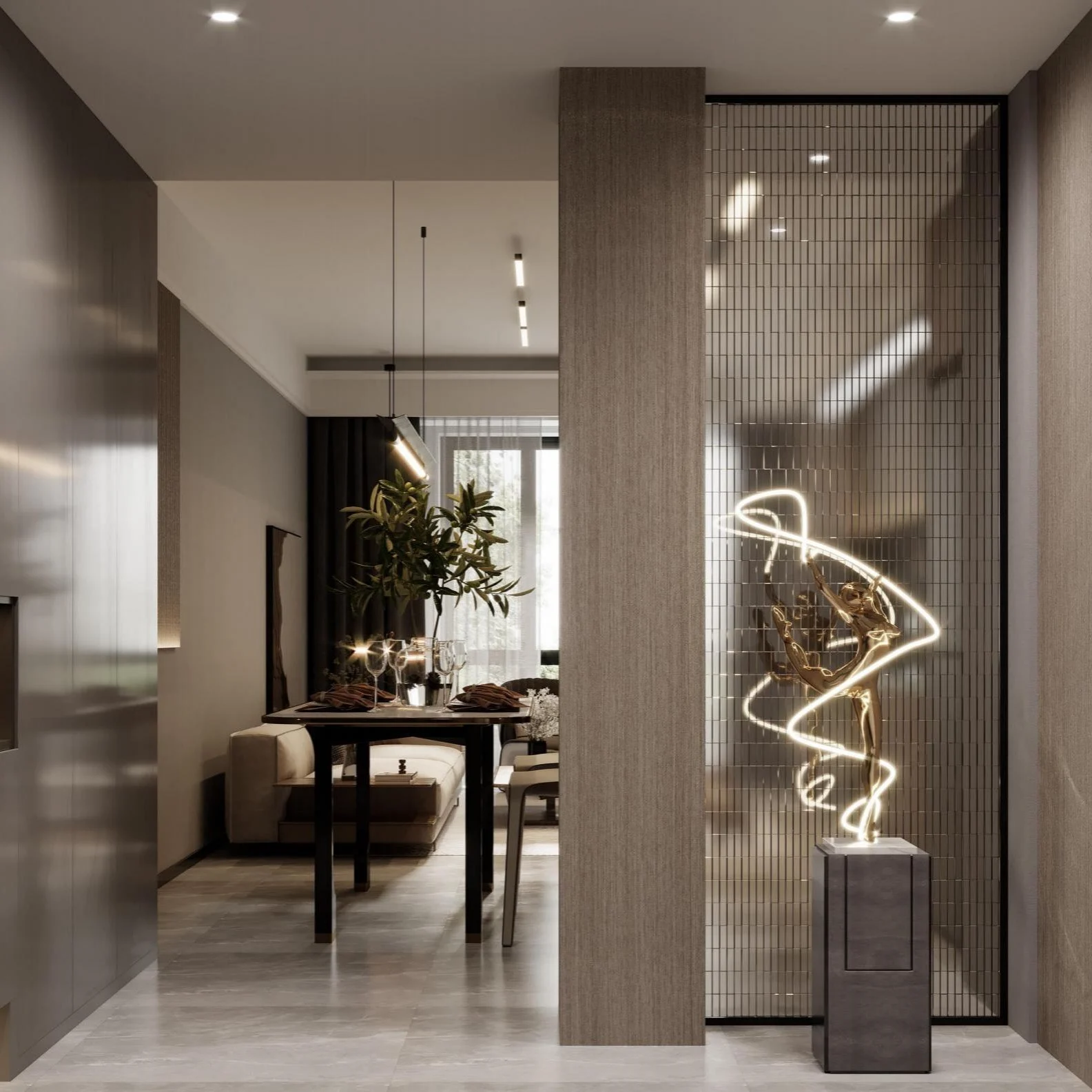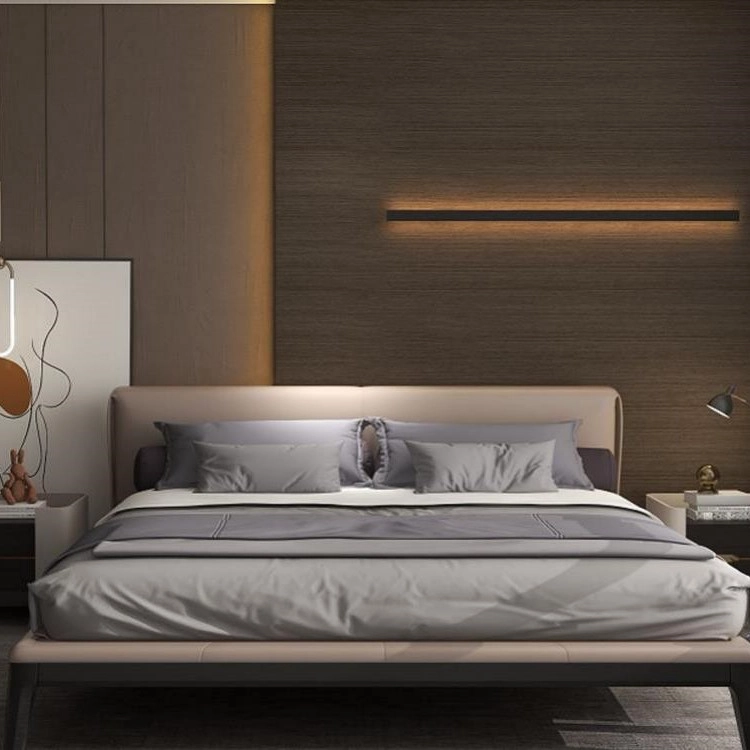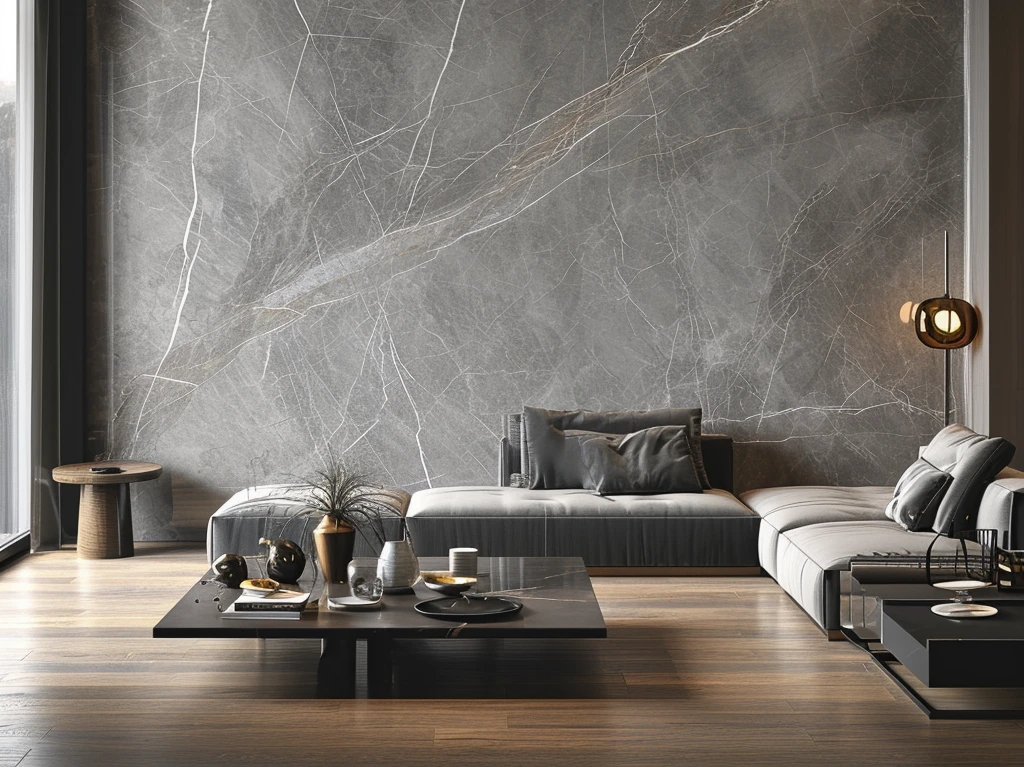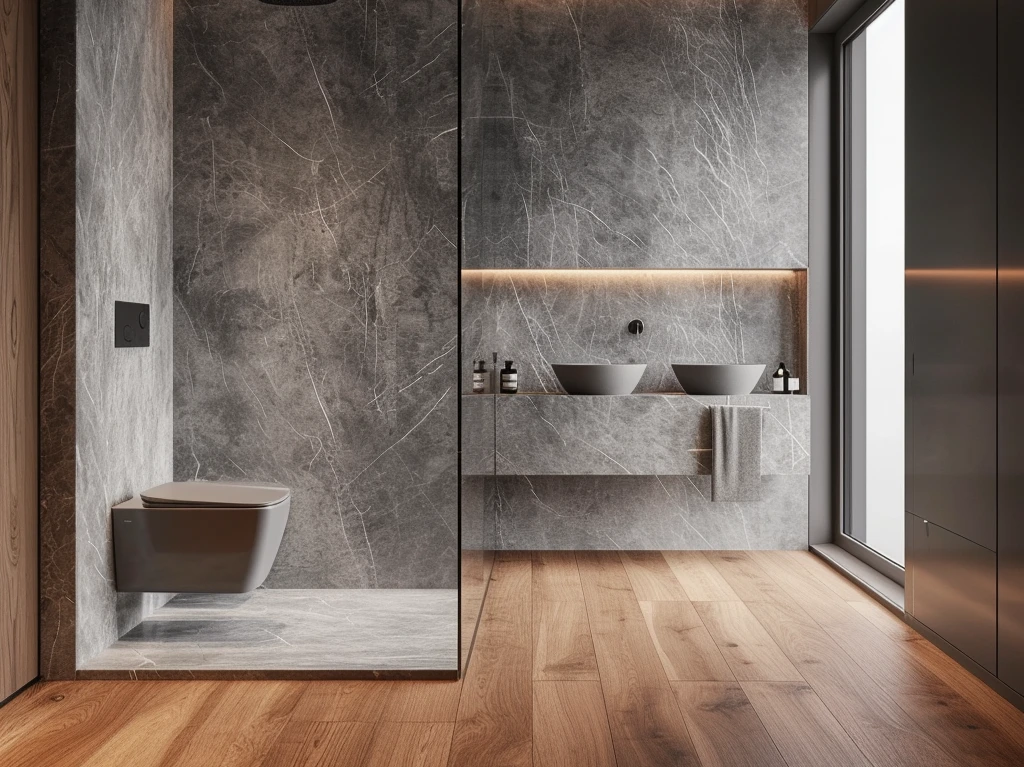WPC wall panels have changed the game for building and decorating homes or businesses. They mix style with practicality. These panels shine in damp spots, tackling issues that regular materials can’t handle well. Their special design and cool features make them a go-to for both houses and offices.
What Are WPC Panels?
Wood Plastic Composite (WPC) panels are crafted materials. They’re made from natural wood powder, plant fibers, light calcium carbonate (like stone dust), and polymer resin. Extras like fire retardants, stabilizers, and polyethylene wax boost their performance. This combo gives WPC panels the warm look of wood but with way better strength and hardly any upkeep.
One big perk is how they mimic the feel and look of real wood. They stand up to moisture, sunlight, and temperature swings much better than wood does. Plus, they’re kind to the planet. They use recycled stuff, so we cut down fewer trees.
Why Moisture Resistance Matters
How WPC Panels Handle Moisture
Moisture resistance is a huge deal for WPC panels. Regular wood often rots, swells, or twists in wet or humid spots. WPC panels don’t have those problems because of their unique structure.
The calcium carbonate in them helps block water from soaking in. The polymer resin acts like a shield to keep water out. This keeps the panels steady, even in super humid places or areas that get wet.
Stabilizers, like calcium-zinc, also play a part. They’re better than old-school lead stabilizers. They handle heat well and are more eco-friendly. These stabilizers keep the panels solid, no matter the moisture level.
WPC Panels vs. Traditional Materials in Wet Areas
In places like bathrooms, kitchens, basements, or outdoor spots, regular materials like wood or MDF often fail. Wood warps or swells when it gets wet over time. MDF gets weak when it soaks up water.
Here’s how they stack up:
- Durability: WPC panels don’t crack or puff up in damp conditions. They stay solid and work well for years.
- Maintenance: Wood needs constant sealing or painting to fight moisture. WPC panels? Almost no work at all because they naturally resist water.
- Cost: Wood or MDF might be cheaper at first. But their upkeep costs pile up. WPC panels save cash in the long run since they need little care.
- Looks: WPC panels look just like natural wood. You can pick different colors or textures to match any style.
- Eco Impact: Cutting down trees for wood harms forests. WPC panels use recycled materials, which helps save nature.
WPC panels are awesome for fixing moisture problems. They’re perfect where regular materials don’t cut it. Their toughness, low upkeep, style options, and green benefits make them a top choice for modern building.
Where to Use WPC Panels in Interior Design
Bathrooms and Kitchens
Bathrooms and kitchens are always dealing with moisture. Wood or MDF often swells, warps, or rots in these spots. WPC panels handle it like champs with their waterproof and moisture-resistant features for its service. Their mix of wood powder, calcium carbonate, and resin makes them last, even in steamy conditions.
Calcium-zinc stabilizers help them stay strong through kitchen heat changes. They also resist stains and chemicals, so spills aren’t a big deal. Cleaning them is a breeze, which makes them super practical.
Basements and Laundry Rooms
Basements and laundry rooms can get damp from leaks or poor airflow. WPC panels are great solutions here. They don’t soak up water, so no mold or damage happens. Their non-slip surface adds safety in wet spots.
They also help basements look nicer. With loads of colors and textures that look like real wood, you can change a dull basement into a warm spot. Their easy upkeep saves cash in the long run.
Outdoor-to-Indoor Transition Areas
Places like patios, sunrooms, or entryways connect the outside with the inside. These spots need materials that handle weather well but also look good indoors. WPC panels mix wood and high-density polyethylene (HDPE). They handle sun, rain, and changing temperatures well. They don’t break down or lose their appeal.
Their UV protection stops fading in sunny places. Their fire-resistant features add safety for areas with fire features like grills or fireplaces.
Style and Appeal
WPC panels are awesome since they look and feel just like real wood but hold up way longer. You’ll find loads of colors and textures to pick from. This means you can create any vibe you want. Go for a snug vibe or a slick look – it’s totally possible.
Top-notch calcium carbonate makes them nice and smooth. It gives them a polished finish. Want a rustic wood feel for your living room? Or maybe a modern style for your office? WPC panels make it simple to get creative.
You can add extras to jazz them up. Think metal lines or LED strips. These touches level up the style. They also add practical perks, like better lighting.
Eco-Friendly Benefits
People care more about the environment these days when choosing building materials. WPC panels fit right in. They use recycled wood powder and plant fibers, cutting down on tree use and helping save forests.
Their production follows tough eco-standards, like ISO14001. They’re free of nasty stuff like formaldehyde or heavy metals, so they’re safe for people and the planet. Their long life means less waste over time.
You can recycle WPC panels, too. When they’re done, they can be reused instead of tossed in landfills. This helps the environment and uses resources wisely.
Conclusion: Perfect for Wet Areas
WPC panels from Latitude are ideal for damp spaces. Their unique design offers durability, style, and eco-benefits. From bathrooms to patios, they resist moisture while looking like wood, making them great for modern designs.
FAQ
Q: Why are WPC panels good for wet areas?
A: WPC panels resist moisture well. They don’t rot, swell, or warp like regular wood or MDF. Their structure includes materials that block water and keep them stable in humid or wet spaces.
Q: Where can I use WPC panels in my home?
A: You can use them in Living Room, Bedroom, Study, Office Building, Meeting Room, School, Kindergarten, Library, Shopping Mall, Hotel, Restaurant, Cinema, Gym. They work great anywhere moisture is a concern, like areas exposed to water or humidity.
Q: How do WPC panels compare to traditional wood or MDF?
A: Unlike wood or MDF, WPC panels don’t crack or swell in damp conditions. They need little upkeep, unlike wood, which requires sealing or painting. They’re also more cost-effective over time and eco-friendly, using recycled materials.







